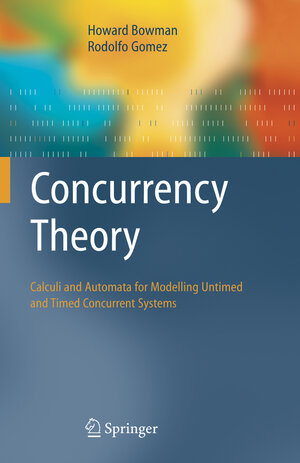
×
![Buchcover ISBN 9781849969512]()
From the reviews:
„This book covers a wide range of results from works in concurrency theory … . scientists and students doing research in various related areas such as concurrency control or parallel computing will find this book quite useful. … the book represents a comprehensive coverage of the development of concurrency theory reflecting the historical progression of the field. … The book undoubtedly will suit students and specialists doing research in concurrency theory … .“ (Alekber Aliyev, Zentralblatt MATH, Vol. 1140, 2008)
Concurrency Theory
Calculi an Automata for Modelling Untimed and Timed Concurrent Systems
von Howard Bowman und Rodolfo GomezIntheworldweliveinconcurrencyisthenorm. Forexample, thehumanbody isamassivelyconcurrentsystem, comprisingahugenumberofcells, allsim- taneously evolving and independently engaging in their individual biological processing. Inaddition, inthebiologicalworld, trulysequentialsystemsrarely arise. However, they are more common when manmade artefacts are cons- ered. In particular, computer systems are often developed from a sequential perspective. Why is this? The simple reason is that it is easier for us to think about sequential, rather than concurrent, systems. Thus, we use sequentiality as a device to simplify the design process. However, the need for increasingly powerful, ? exible and usable computer systems mitigates against simplifying sequentiality assumptions. A good - ample of this is the all-powerful position held by the Internet, which is highly concurrent at many di? erent levels of decomposition. Thus, the modern c- puter scientist (and indeed the modern scientist in general) is forced to think aboutconcurrentsystemsandthesubtleandintricatebehaviourthatemerges from the interaction of simultaneously evolving components. Over a period of 25 years, or so, the ? eld of concurrency theory has been involved in the development of a set of mathematical techniques that can help system developers to think about and build concurrent systems. These theories are the subject matter of this book.



